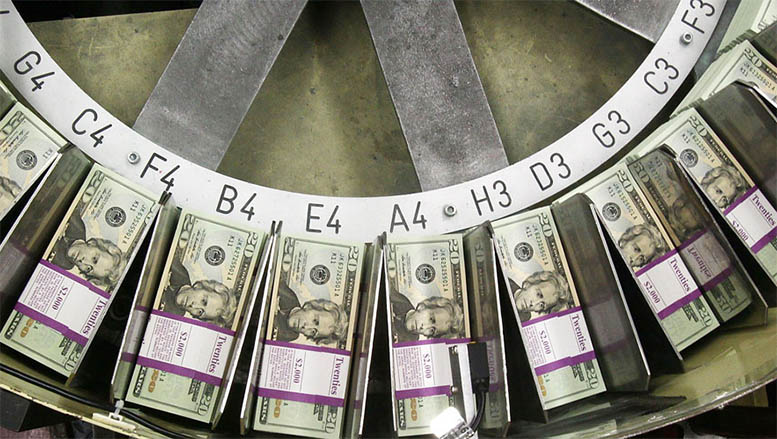 By Tyler Durden
By Tyler Durden
About one in five unemployment insurance dollars paid out during the Covid-19 pandemic went to people who didn’t qualify for the benefits, according to a report issued this week by the U.S. Government Accountability Office (GAO).
At the same time it spotlighted the fiscal disaster, the congressional watchdog added the country’s unemployment insurance (UI) system to its list of federal programs at “high risk” for waste, fraud, abuse and mismanagement.
To underscore the severity of the situation, the high-risk label was added outside the agency’s regular biennial schedule for making such designations. “The widespread problems plaguing the unemployment insurance system are extremely troubling,” said GAO head Gene L. Dodaro.
Things were terrible enough in the UI system before the pandemic, with an estimated 9% to 13% of benefit payments considered “improper” between 2016 and 2020—meaning they went to people who didn’t qualify for any benefits, or were overpayments to those who qualify for some benefits.
During the pandemic, however, the improper payment rate more than doubled to 18.9%; the Department of Labor estimates that rate will continue through the 2022 fiscal year.
Far worse—with Congress shoveling money into UI programs to compensate for government-forced business shutdowns, the actual dollar total of the overpayments soared almost ten-fold—from $8.0 billion in fiscal year 2020 to $78.1 billion in 2021.
And those numbers understate just how bad things are—perhaps by a wide margin.
“The full extent of the UI system’s improper payments is not presently known because DOL and states have struggled to reliably report improper payments information, and DOL has not yet estimated amounts of improper payments for [two temporary pandemic UI] programs,” says the GAO.
The $2.2 trillion CARES Act created three temporary UI programs at a cost of over $723 billion:
- Pandemic Unemployment Assistance (PUA) gave benefits to people who don’t normally qualify, such as self-employed and gig economy workers
- Federal Pandemic Unemployment Compensation (FPUC) provided an additional weekly benefit on top of the normal payout—even for legit claims, this resulted in many people making far more from UI than they did when they worked
- Pandemic Emergency Unemployment Compensation (PEUC) funded additional weeks of benefits for people whose unemployment went beyond the normal time limit for benefits
The GAO says these programs exacerbated existing fraud risks and created new ones. Identify theft schemes were the most common, with criminals using stolen personal information to file a single claim or big bundles of them.
In the most glaring example of the orgy of UI fraud that targeted pandemic UI benefits, California estimates it paid $810 million for claims filed in the name of 45,000 prison inmates.
Not all overpayments represent fraud. The GAO said antiquated state UI systems, low staffing and inexperienced staff hired to handle the unprecedented surge in claims also played a role.
Two aspects of the government’s frantic emergency mindset expedited benefits—and expedited bogus claims:
- The CARES Act allowed self-employed, gig economy and similar PUA applicants to self-certify various aspects of their eligibility, without having to provide documentation of their prior income
- In normal times, states may take up to 21 days to make the first benefit payment, which allows some time for states to detect fraud. However, the Department of Labor encouraged states to start benefits in the first week.
Billions of dollars continue flowing into the wrong hands. Summing up the need for urgency, the GAO report says, “The magnitude of potential financial loss during the pandemic has likely weakened public confidence in the integrity of the UI system.”
Ya think?
Source: ZeroHedge
Become a Patron!
Or support us at SubscribeStar
Donate cryptocurrency HERE
Subscribe to Activist Post for truth, peace, and freedom news. Follow us on SoMee, Telegram, HIVE, Flote, Minds, MeWe, Twitter, Gab, What Really Happened and GETTR.
Provide, Protect and Profit from what’s coming! Get a free issue of Counter Markets today.